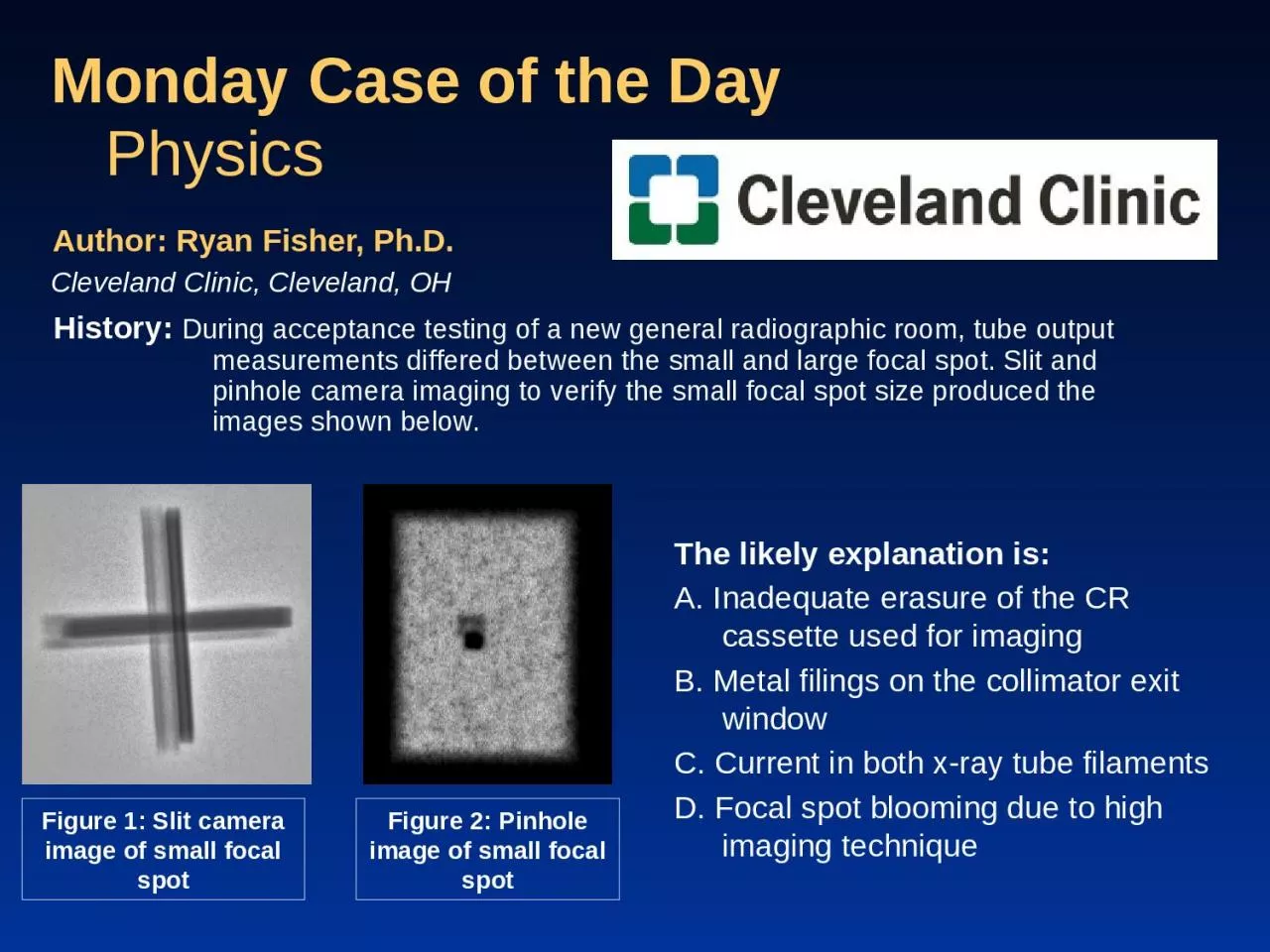PPT-Monday Case of the Day History:
Author : mia | Published Date : 2024-03-13
During acceptance testing of a new general radiographic room tube output measurements differed between the small and large focal spot Slit and pinhole camera imaging
Presentation Embed Code
Download Presentation
Download Presentation The PPT/PDF document "Monday Case of the Day History:" is the property of its rightful owner. Permission is granted to download and print the materials on this website for personal, non-commercial use only, and to display it on your personal computer provided you do not modify the materials and that you retain all copyright notices contained in the materials. By downloading content from our website, you accept the terms of this agreement.
Monday Case of the Day History:: Transcript
Download Rules Of Document
"Monday Case of the Day History:"The content belongs to its owner. You may download and print it for personal use, without modification, and keep all copyright notices. By downloading, you agree to these terms.
Related Documents














